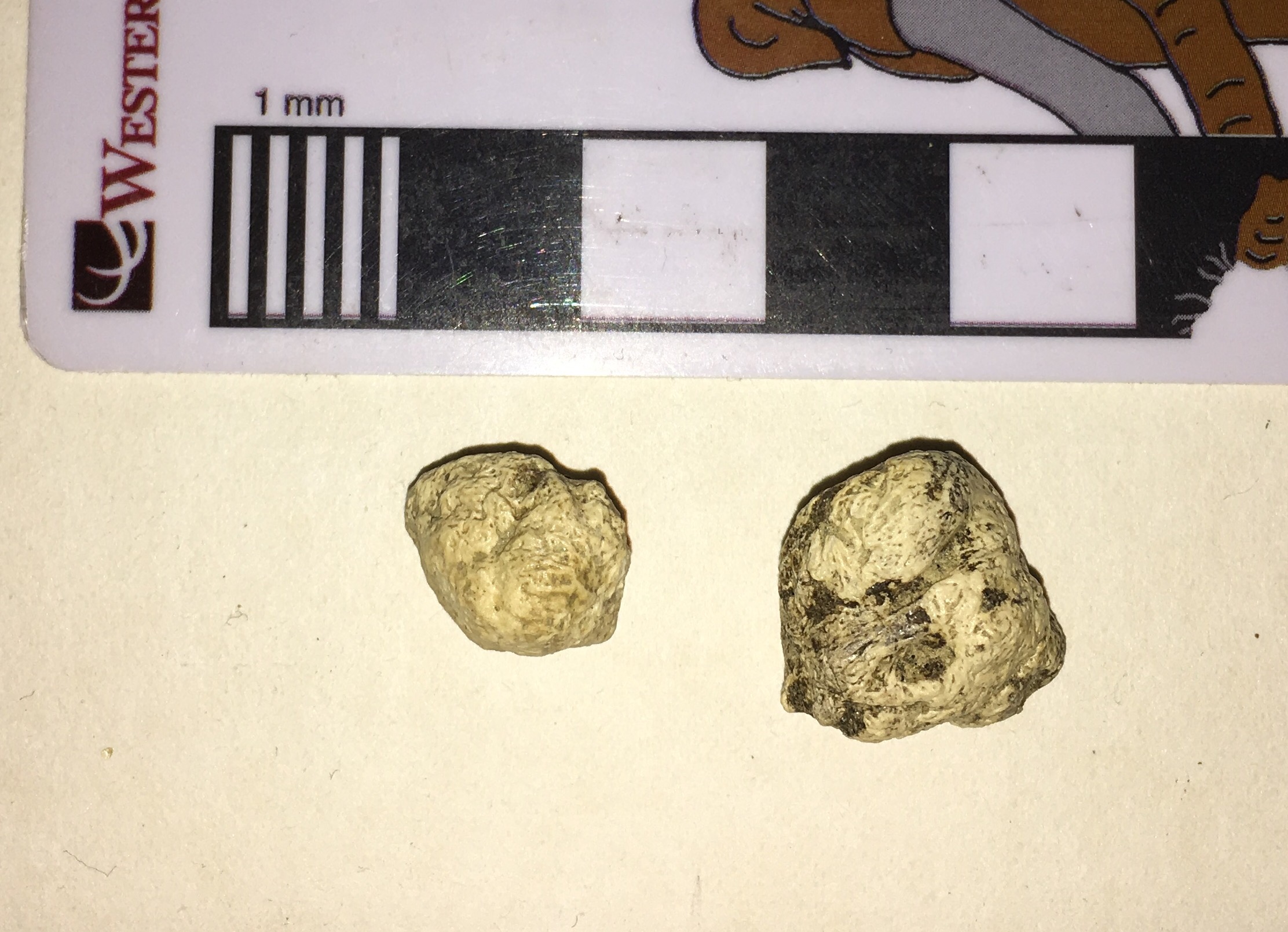 Next Tuesday evening, Greg McDonald is going to give a lecture at Western Science Center on fossil sloths, so for this week's Fossil Friday we have sloth bones!The tiny bones shown here are actually the most numerous sloth element found at Diamond Valley Lake. These are dermal ossicles, bony nodules embedded in the skin of certain species of ground sloths. Below is another view of the same two specimens:
Next Tuesday evening, Greg McDonald is going to give a lecture at Western Science Center on fossil sloths, so for this week's Fossil Friday we have sloth bones!The tiny bones shown here are actually the most numerous sloth element found at Diamond Valley Lake. These are dermal ossicles, bony nodules embedded in the skin of certain species of ground sloths. Below is another view of the same two specimens: Of the three sloth species found at Diamond Valley Lake, only one, Paramylodon harlani, is known to have had dermal ossicles. These two ossicles were found associated with a partial skeleton of Paramylodon from the East Dam (part of the jaw of this individual was featured in an earlier Fossil Friday). In fact, the larger ossicle had rolled into one of the empty tooth sockets in the lower jaw.The presence of dermal ossicles in some ground sloths is a bit surprising. The ossicles are generally assumed to provide armor protection, but they are tiny, and it's not clear how extensive they were. While several patches of preserved Paramylodon skin have been found with numerous embedded ossicles, we don't seem to find enough ossicles to cover the entire, or even most, of the body. It's also curious that most ground sloths seem to have gotten along perfectly well without dermal armor, including Megalonyx, which was close to the same size as Paramylodon, overlapped with it in time and space, and was even more widely ranging. Dermal armor is common in some other groups within the Xenarthra (the order that includes sloths), such as the armadillos and glyptodonts. So it's possible that the armor in Paramylodon is a relict, a holdover from some earlier sloth ancestor. But this would mean the earliest sloths should have had armor (as far as I know this is not the case), and that armor was subsequently lost in almost every sloth lineage except for a few species. So for now the origin and function of Paramylodon dermal ossicles remain a bit mysterious.
Of the three sloth species found at Diamond Valley Lake, only one, Paramylodon harlani, is known to have had dermal ossicles. These two ossicles were found associated with a partial skeleton of Paramylodon from the East Dam (part of the jaw of this individual was featured in an earlier Fossil Friday). In fact, the larger ossicle had rolled into one of the empty tooth sockets in the lower jaw.The presence of dermal ossicles in some ground sloths is a bit surprising. The ossicles are generally assumed to provide armor protection, but they are tiny, and it's not clear how extensive they were. While several patches of preserved Paramylodon skin have been found with numerous embedded ossicles, we don't seem to find enough ossicles to cover the entire, or even most, of the body. It's also curious that most ground sloths seem to have gotten along perfectly well without dermal armor, including Megalonyx, which was close to the same size as Paramylodon, overlapped with it in time and space, and was even more widely ranging. Dermal armor is common in some other groups within the Xenarthra (the order that includes sloths), such as the armadillos and glyptodonts. So it's possible that the armor in Paramylodon is a relict, a holdover from some earlier sloth ancestor. But this would mean the earliest sloths should have had armor (as far as I know this is not the case), and that armor was subsequently lost in almost every sloth lineage except for a few species. So for now the origin and function of Paramylodon dermal ossicles remain a bit mysterious.
